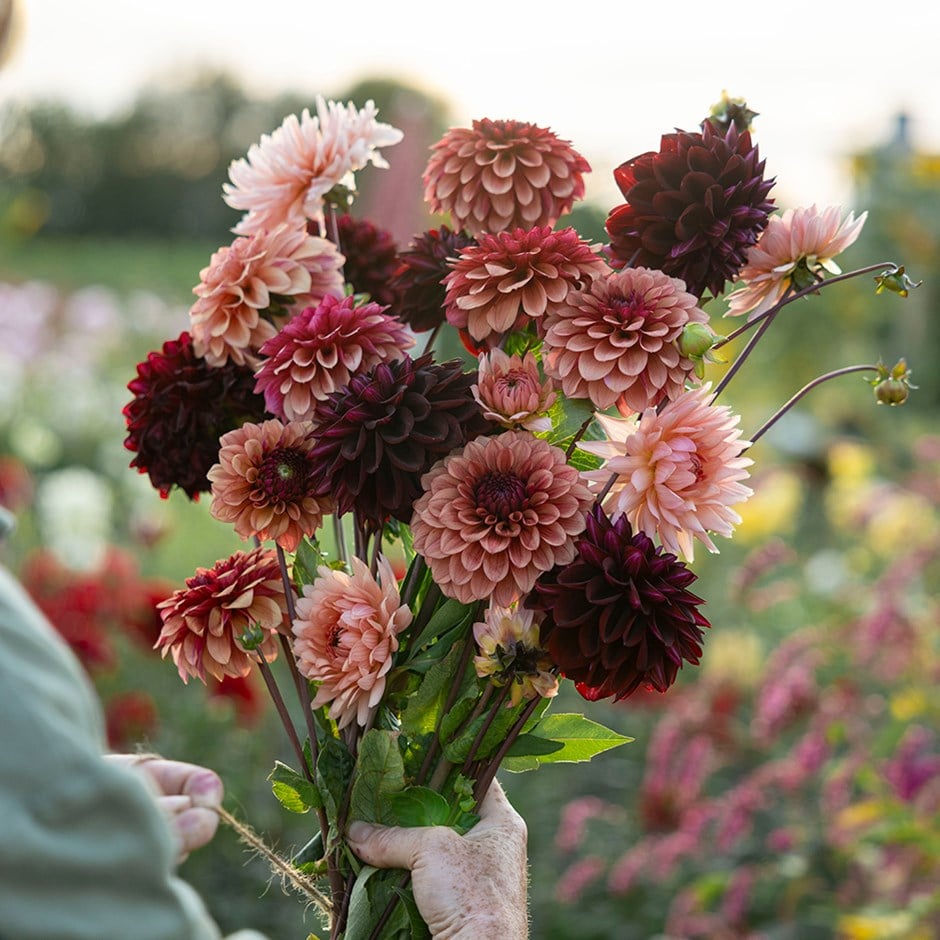Burnt sugar dahlia collection
dahlia collection
This bulb dies back after flowering each year and enters a period of rest ahead of regrowth the following season.
- Position: Full sun
- Soil: Moderately fertile, moist but well-drained soil
- Rate of growth: Average
- Flowering period: July to September
- Hardiness: Half hardy (may need winter protection)
A bronzed pink and maroon coloured collection of contrasting and complementary dahlia colours and forms to illuminate late summer gardens and cut flower vases.
In each collection you will receive one tuber of each of the following:
Dahlia 'Jowey Midnight': This fabulous, show-stopping, cultivar broods with its Gothic, dark purple-red blooms that are near black in appearance. Contrasting with mid-green foliage, ‘Jowey Midnight’ adds depth and body to the colour palette, while its neat, uniform shape provides structural interest. A sumptuous choice for a cut flower vase mixed with complementary burgundy, or contrast with pink and apricot toned companions. Grows to 1m.
Dahlia 'Jowey Merel': A resplendent dahlia boasting numerous dusky apricot-pink flowers atop robust and sturdy stems contributing both style and substance to romantic or cut flower border and container displays. Grows to 1m.
Dahlia 'Preference': A tall, enthusiastic bloomer boasting delicate flowers in a gorgeous blend of lemon, peach, and pink hues from midsummer through autumn's first frost. Pointed petals in sunburst fashion unfurl in a delicate ombre, transitioning from bright yellow centres to soft pink edges. Grows to 1.2m.
Dahlia tubers can be planted outside after frost, or started off in pots under glass in late winter to early spring. Plant them horizontally approximately 12cm deep, making sure the ‘eyes’ are uppermost. Allow enough room between each tuber so the plants can grow and spread to their full size without being overcrowded. While in growth, provide a high-nitrogen liquid feed each week in June, then a high-potash fertiliser each week from July to September. Stake with canes or brushwood if it becomes necessary. In mild areas, leave them in situ over winter, but protect the crown with a generous layer of dry mulch. In colder areas, carefully lift and clean the tubers once the first frosts have blackened the foliage and allow them to dry naturally indoors. Then place the dry tubers in a shallow tray, just covered with slightly moist potting compost, sand or vermiculite and store in a frost-free place until planting out again.
- Humans/Pets: Ornamental bulbs - not to be eaten

